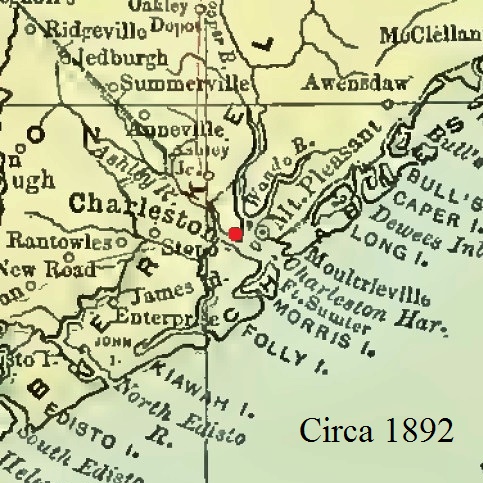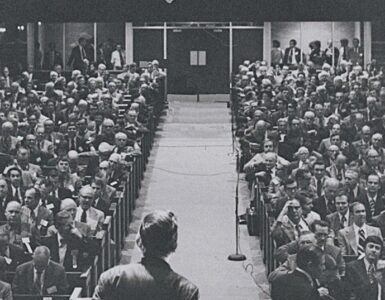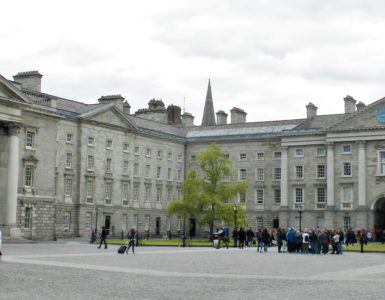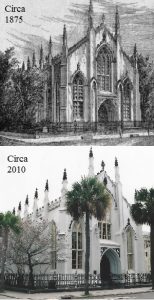 The Huguenot Church at the corner of Queen and Church Streets in Charleston—the only extant Huguenot congregation in the United States—is a reminder of the importance of French Reformed Protestantism to the history of Charleston and the state of South Carolina. Huguenots began leaving France in 1685 due to the revocation of the Edict of Nantes by Louis XIV. The edict had granted a degree of religious liberty for Protestants when it was enacted in 1598. Roughly four-hundred-thousand Huguenots emigrated to England, Holland, Ireland, and South Carolina and New York in America. Some historians believe the Huguenots that emigrated were some of France’s most gifted minds and talented entrepreneurs. Charleston’s French influences are seen throughout the city with street names such as Gillon, Beaufain, Gendron, Vendue Range, Cordes, Legare, Laurens, and Huger, as well as in historical tourist attractions such as the home of the plantation owner Joseph Manigault. As the years passed some Huguenots with their Reformed doctrine left their Charleston port of entry and moved to other areas of South Carolina where they often enjoyed successful business enterprises including those associated with the textile industry.
The Huguenot Church at the corner of Queen and Church Streets in Charleston—the only extant Huguenot congregation in the United States—is a reminder of the importance of French Reformed Protestantism to the history of Charleston and the state of South Carolina. Huguenots began leaving France in 1685 due to the revocation of the Edict of Nantes by Louis XIV. The edict had granted a degree of religious liberty for Protestants when it was enacted in 1598. Roughly four-hundred-thousand Huguenots emigrated to England, Holland, Ireland, and South Carolina and New York in America. Some historians believe the Huguenots that emigrated were some of France’s most gifted minds and talented entrepreneurs. Charleston’s French influences are seen throughout the city with street names such as Gillon, Beaufain, Gendron, Vendue Range, Cordes, Legare, Laurens, and Huger, as well as in historical tourist attractions such as the home of the plantation owner Joseph Manigault. As the years passed some Huguenots with their Reformed doctrine left their Charleston port of entry and moved to other areas of South Carolina where they often enjoyed successful business enterprises including those associated with the textile industry.
One person of Huguenot descent was David Xavier La Far who was born in Charleston on November 2, 1826. He remained in his hometown for his education attending the College of Charleston graduating valedictorian of his class of seven students in 1846. John L. Girardeau—another South Carolinian of Huguenot ancestry—had graduated in 1844 and would go on to be a minister and seminary professor. La Far studied law with the intention of having his own practice but came to believe he was instead called to the ministry, so he laid aside his law tomes for Scripture and theology books. It is not clear how he obtained his divinity education but it may be that the pastor of the Huguenot Church at the time, Rev. Charles Wallace Howard, tutored him in the subjects required. Howard was a Presbyterian minister from Georgia who had been called to the Huguenot Church in 1845. During Howard’s ministry, the current church building was opened for regular services on Sunday, May 11, 1845, with the sermon text Psalm 124:8, “Our help is in the name of the Lord, who made heaven and earth.” But due to health concerns and a need for convalescence in 1849, Rev. Howard rested from ministry and took an extended trip to Europe. When he returned from his trip he attempted to pastor but he could not take on the full responsibilities of his call. Thus, young La Far assisted Howard. As Pastor Howard continued to convalesce, in February 1850 the congregation asked La Far to supply the pulpit for a period of one year.
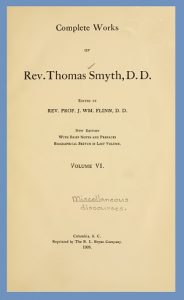 After his ministry serving his home church, D. X. La Far moved about seventy-five miles northwest from Charleston to Orangeburg where he supplied its Presbyterian Church from July 1851 to January 1856. Information about La Far is limited but it is known that he was back in Charleston on April 1, 1860 to attend the installation of Thomas O. Rice pastor of the Congregational Church (Circular Church) in Charleston. Also in attendance with La Far was his Charleston College campus colleague, John L. Girardeau; Thomas Smyth, who was the pastor of nearby Second Presbyterian Church; and other Presbyterian notables. One attendee, Gardiner Spring, D.D., had travelled all the way from New York for the installation. In 1861, “The Spring Resolutions” would be presented to the General Assembly of the Presbyterian Church in the United States of America (PCUSA), Old School, which would lead to churches in the Confederacy leaving the PCUSA to form the Presbyterian Church in the Confederate States of America (PCCSA). It is known that La Far, according to the 1861 census of Charleston, owned a single property under his name which was a frame house on the south side of West Street at number 8, but at the time he was renting it to a tenant named Jesse Russel. It is believed that D. X. La Far left Charleston sometime shortly after the Civil War began, thus it is possible he would have rented the house during his absence.
After his ministry serving his home church, D. X. La Far moved about seventy-five miles northwest from Charleston to Orangeburg where he supplied its Presbyterian Church from July 1851 to January 1856. Information about La Far is limited but it is known that he was back in Charleston on April 1, 1860 to attend the installation of Thomas O. Rice pastor of the Congregational Church (Circular Church) in Charleston. Also in attendance with La Far was his Charleston College campus colleague, John L. Girardeau; Thomas Smyth, who was the pastor of nearby Second Presbyterian Church; and other Presbyterian notables. One attendee, Gardiner Spring, D.D., had travelled all the way from New York for the installation. In 1861, “The Spring Resolutions” would be presented to the General Assembly of the Presbyterian Church in the United States of America (PCUSA), Old School, which would lead to churches in the Confederacy leaving the PCUSA to form the Presbyterian Church in the Confederate States of America (PCCSA). It is known that La Far, according to the 1861 census of Charleston, owned a single property under his name which was a frame house on the south side of West Street at number 8, but at the time he was renting it to a tenant named Jesse Russel. It is believed that D. X. La Far left Charleston sometime shortly after the Civil War began, thus it is possible he would have rented the house during his absence.
D. X. La Far was ordained in 1863 and the sources consulted make no mention of his having been previously licensed, but he was likely licensed given his thirteen years of intermittent pulpit supply. His initial ordained ministry was supplying the First Presbyterian Church in Anderson, 1863-1864, then he served the Varennes Church, 1864-1866, and by about 1871 he was supplying the Laurel Street Chapel which appears to have been a Black congregation. Currently, the Francis Brown African Methodist Episcopal Church is on what was Laurel Street but is presently named Ashe Street. Louisa Cheves Stoney, who edited her grandfather’s Autobiographical Notes, Letters and Reflections by Thomas Smyth, D.D., 1914, has noted that the Laurel Street Chapel was in her day “African Methodist.” One of La Far’s obituaries noted that he did some mission work in Charleston in his earlier years which could have included the Laurel Street work. A considerable gap in the records extends for more than a decade during which time it is believed he was primarily teaching school in Charleston. The Presbyterian Church documentation of his ministerial efforts then restarted with Tirzah Church, December 1883 to November 1884, followed by Beulah Church, 1885-1886, and then the Lynchburg Church for several months in 1892. At some point he supplied the Fair Hope Presbyterian Church in Lamar, Darlington County, which was founded in 1872, but the specific dates of his ministry were not located. He also was associated with the Brewington Presbyterian Church located about nine miles from Manning and his last pastoral work was serving two congregations near Greeleyville, the Richmond Church, founded in 1885, and the Corinth Church, founded 1886.
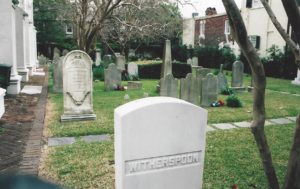 Due to health problems Rev. La Far went to Brevard, North Carolina where he hoped to find relief from the late summer humidity and heat prevalent in the South Carolina Low Country. However, the hoped convalescence was to no avail because he passed away on August 24, 1897. Even though he had not been well when he went to the mountains, his death had not been expected. His body was returned to the Low Country where his funeral was led by Rev. John Gordon Law, who was a Presbyterian minister in Darlington, and he was buried in the cemetery of the Huguenot Church in Charleston. He was married to Mary Wetmore Robertson of Connecticut who predeceased him, October 6, 1878, and is buried beside him in Charleston; then he married Martha Nelson Bartlett who survived him dying February 24, 1920, and is buried in the Sumter Cemetery, Sumter, South Carolina. A third grave marker in the plot with Rev. La Far and Mary in Charleston may be for a child (see “Notes” below). “A faithful pastor, a devoted husband, and father,” is inscribed on his gravestone.
Due to health problems Rev. La Far went to Brevard, North Carolina where he hoped to find relief from the late summer humidity and heat prevalent in the South Carolina Low Country. However, the hoped convalescence was to no avail because he passed away on August 24, 1897. Even though he had not been well when he went to the mountains, his death had not been expected. His body was returned to the Low Country where his funeral was led by Rev. John Gordon Law, who was a Presbyterian minister in Darlington, and he was buried in the cemetery of the Huguenot Church in Charleston. He was married to Mary Wetmore Robertson of Connecticut who predeceased him, October 6, 1878, and is buried beside him in Charleston; then he married Martha Nelson Bartlett who survived him dying February 24, 1920, and is buried in the Sumter Cemetery, Sumter, South Carolina. A third grave marker in the plot with Rev. La Far and Mary in Charleston may be for a child (see “Notes” below). “A faithful pastor, a devoted husband, and father,” is inscribed on his gravestone.
The minutes of the Synod of South Carolina Presbyterian Church in the United States (PCUS) for 1898 published a biographical memorial for their colleague and friend that was concluded with the following words from James Montgomery’s hymn, “Servant of God, Well Done,” 1816.
Rev. La Far, even though a Huguenot descendant, had spent much of his life as a Presbyterian minister. As the Huguenot generations in America passed, the French Reformed found the Calvinism of Presbyterians a suitable alternative to their own Huguenot confessional doctrine. Particularly in South Carolina it is not uncommon to find several French surnames in Presbyterian cemeteries and when reading congregational histories pastors with Gallic names are often mentioned.
Barry Waugh
Notes—Others of Huguenot descent with articles on Presbyterians of the Past include, J. H. Merle D’Aubigné who wrote a multi-volume history of the Reformation, and Augustus W. Loomis who was a missionary to Chinese. The PCCSA was named Presbyterian Church in the United States (PCUS) after the Civil War ended. Helpful information about La Far’s marriages and children was located on Find-a-Grave as posted by “Saratoga” in memorial number 27158980. The listing includes some well-done pictures of the grave site in the cemetery of the Huguenot Church. There is also an entry with photograph for La Far’s second wife, also by Saratoga, numbered 68105563. Some of the family relationships are calculated, but the two wives mentioned are confirmed by grave stone images and there may have been a third wife. Children may have numbered five or more. Howard’s dedicatory sermon for the Huguenot Church is titled, A Sermon, Delivered at the Re-Opening and Dedication of the French Protestant Church of Charleston, S.C., on Sunday, the 11th Day of May, 1845, 1845. Internet Archive has some other publications relevant to the Huguenot Church and South Carolina Huguenots.
Sources—The two color photographs were taken by the author of this biography. The two images of the Huguenot Church in the composite were separated by about 135 years, but other than color, the historical plaque by the door, and the palmettos, the church looks the same. Presbyterian reference books were consulted including Scott’s Ministerial Directory of the PCUS; the historical works of Jones and Mills and George Howe (2 vols.) on the South Carolina Presbyterian Church; J. B. Martin’s Guide to Presbyterian Ecclesiastical Names and Places (invaluable for discerning proper Presbyterian entity identities), and several newspaper obituaries located on the Library of Congress site. The information about the installation service at Circular Church in Charleston was located in Complete Works of Thomas Smyth, D.D., vol. 6. There is an index to Smyth’s works available in PDF on the PCA Historical Center website, and Internet Archive has the ten-volume set of Smyth’s works in digital form. The Charleston area map is from The Universal Atlas Including County and Railroad Maps of the United States… [etc.], 1892, and the drawing of the Huguenot Church is from, Guide to Charleston Illustrated, Being a Sketch of the History of Charleston, S. C., 1875, both of which were located on Internet Archive.


